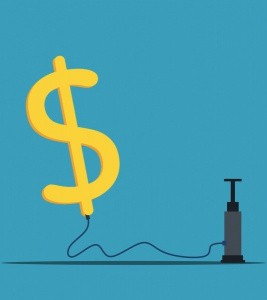Inflation Strategies Start the discussion!
New Category!
Thinking of a Best Practice which could fit in this category? Tell us

What is inflation
Inflation is the rising in prices of goods and services over a period of time which consequently devalues the currency. This is because, if good are more expensive and wages aren’t increasing with these prices, the amount of goods and services you are able to purchase decreases. In other words, our purchasing power declines.
How to measure inflation?
Inflation is measured by comparing the percentage increase in price between lots of regularly consumed goods and services from one point in time to a later one. Inflation only occurs if there is an increase in prices of goods and services over a period of time. If prices decrease from one point in time to a later one, deflation has occurred.
Is inflation good?
Inflation is good insofar as it isn’t too high. High levels of inflation mean people are unable to consume goods and services as they normally would. The value of the country’s currency decreases which slows economic growth. On the other hand, inflation can be too low. If prices increase very slowly, this is a sign of slow economic growth. A stable increase is also important. If prices are very changeable, in other words if inflation rates are volatile, it becomes difficult for people to plan how much they can save, spend, or invest. This means people might save when the economy actually needs spending and vice versa.
How is the inflation rate kept stable?
Inflation rates are kept stable by incentivising consumers to either spend or save. This is primarily done by altering interest rates. If inflation rates are too high, it means people are spending too much, as demand for goods drives up their prices. Too much spending can lead to banks collapsing, meaning they are unable to pay their customers the money they have and in even worse cases, the economy can collapse. To counteract this, the government can raise its interest rates, making it more expensive to borrow money and so encourages them to save. As a result, prices will decrease and inflation will lessen. Alternatively, if inflation rates are too low, the government can lower interest rates. This incentivises spending, in turn raising prices and so the inflation rate.
Examples of extreme inflation
1920’s Germany – Following demands by other countries for post war reparations, Germany were unable to pay so printed more money in order to do so. This massively devalued the currency, to the point of it being practically worthless. People would paper their walls with the bills and buy loaves of bread with wheelbarrows full of money.
2007-9 Zimbabwe – National debt was crippling the Zimbabwe economy, so the government printed more money to counteract this. As a result, prices increased in Zimbabwe by 80 billion percent in just one month and the population ceased to use the worthless currency.



